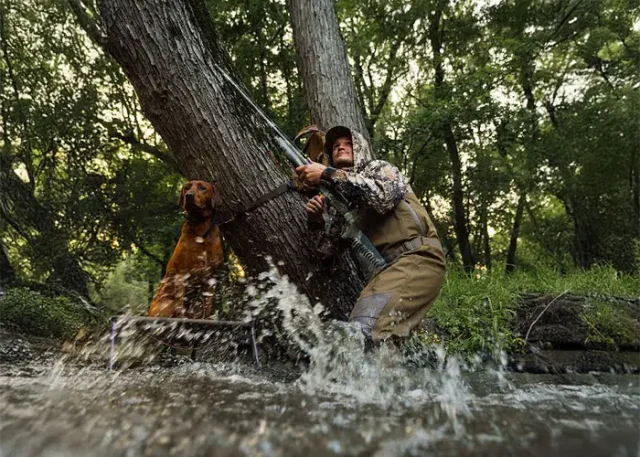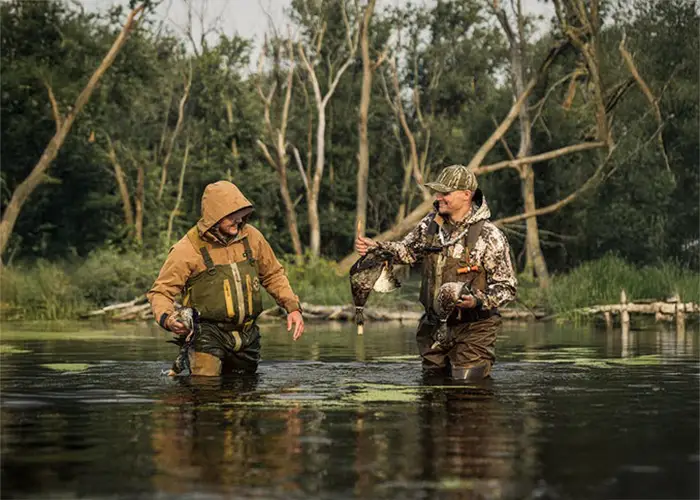
Waterfowl hunting has always demanded grit, patience, and the ability to adapt to unpredictable weather. But as hunting environments grow more challenging, colder mornings, deeper wetlands, and faster-moving seasons, the gear hunters rely on has also evolved. One of the biggest transformations has come from advancements in wader technology. What used to be heavy, restrictive, and quick to wear out has now become lighter, stronger, and more engineered for performance.
This shift has empowered hunters to move farther, stay warmer, and remain comfortable during long sessions in the blind. From insulation to waterproofing to ergonomic structure, today’s waders reflect the realities modern hunters face in the marsh.
Why Wader Technology Needed to Evolve
Older styles of waders often leaned toward bulk and stiffness. While traditional neoprene waders still play a valuable role, especially in late-season cold, they no longer fit every hunting scenario. Hunters today cover more distance and face wider temperature variations. That’s why the rise of breathable waders has been so impactful.
Instead of trapping heat and moisture, breathable materials allow sweat to escape while keeping icy water out. This dual balance makes them ideal for early and mid-season hunts when overheating becomes just as problematic as cold exposure.
At the same time, high-quality waterproof waders and durable waders have become indispensable for hunters who crawl through brush, kneel frequently, and face sharp vegetation. As hunting conditions have intensified, gear durability and comfort have moved to the forefront of performance-based design.
The Science Behind Today’s High-Performance Waders
Modern waders are no longer simple waterproof shells. They are engineered systems built from advanced materials and layering techniques designed to optimize movement, warmth, and protection.
Key innovations include:
• Multi-layer waterproof fabric
High-performance membranes now offer protection ratings of 20,000mm and beyond while still allowing breathability. This prevents internal moisture buildup, a major discomfort factor during long hunts.
• Ergonomic suspender and belt systems
New harness designs eliminate pressure points, improve support, and distribute weight evenly. This matters for hunters who spend hours moving in chest-level water or mud.
• Insulated boot construction
High-gram insulation, rugged tread patterns, and non-slip soles allow hunters to move confidently on ice, submerged logs, or uneven wetlands.
• Reinforced lower-body protection
Hunters frequently kneel, crawl, or push through thick vegetation. Reinforced neoprene knee and shin padding protects against both impact and abrasion.
The result is a new generation of gear designed to work with the body rather than restrict it.
A Natural Fit: How Co-Engineering Has Strengthened Wader Development
One of the strongest influences behind today’s improvements is the partnership between technical gear manufacturers and field-tested hunting experts. When engineering meets real-world experience, the resulting designs become practical and trustworthy.
A brief example of collaborative innovation
In the middle of the hunting gear landscape, one notable co-development effort illustrates how collaboration elevates design. During recent advancements, the TideWe × Minndak Slough Dawgs Duck Hunting Waders emerged from two teams working together, one specializing in advanced waterproof technology, the other offering field insight from countless hours in flooded timber and frozen marsh.
Their approach focused on protecting hunters from cold, moisture, and mobility limitations. The waders incorporated:
- 4-layer HYDRA-SHIELD™ waterproof and breathable fabric
- TiZIP® MasterSeal™ airtight waterproof zippers
- 1200G 3M™ Thinsulate™ insulated boots
- Reinforced neoprene knee and shin pads
- Ergonomic, buckle-free adjustability
- Gear-Matrix™ pocket storage for practical field organization

Rather than a promotional push, this collaboration simply reflects a broader industry trend: hunters increasingly rely on gear informed by real expertise, not assumptions. As environments get tougher, the need for design rooted in field experience becomes even more important.
Balancing Warmth, Mobility, and Durability in Wetlands
A successful waterfowl hunt demands three things from waders: warmth, mobility, and durability. Missing even one can quickly turn a promising morning into an uncomfortable or even unsafe experience.
Warmth
Cold water is unforgiving. That’s why modern wader boots incorporate advanced insulation that maintains warmth even at subzero temperatures. Hunters no longer have to rotate chemical warmers or double up on socks simply to get through their hunt.
Mobility
Today’s breathable fabrics and side-expansion zippers allow hunters to move freely without feeling restricted. This matters during long walks through mud channels or rapid repositioning while birds are overhead.
Durability
Reinforced panels, double-stitching, and abrasion-resistant layers prevent tears during kneeling, crawling, or pushing through cattails. Reliable, durable waders help hunters maintain confidence in harsh terrain where failure isn’t an option.
Smart Storage: A Small Feature With Big Impact
Organization plays an underestimated role in hunting efficiency. Modern wader designs now incorporate fleece-lined hand warmers for cold mornings, quick-access pockets for calls and shells, and sealed interior pockets for sensitive items.
This isn’t a luxury, it’s a performance necessity. When ducks are circling and seconds matter, gear needs to be accessible without unnecessary movement.
Choosing the Right Waders for Your Season
When selecting between different styles, it helps to match the wader type to seasonal demands:
- Early season: high breathability, lightweight construction
- Mid-season: hybrid models with moderate insulation
- Late season: heavily insulated boots, thicker materials, or traditional neoprene
Your environment should determine your choice, not the other way around.
Many hunters even use two different styles throughout the season, breathable waders for mobility and mixed temperatures, and neoprene waders for deep winter hunts.
Final Thoughts
Waterfowl hunting continues to evolve, and so does the gear that supports it. Today’s hunters benefit from innovations that prioritize comfort, mobility, and long-term durability in unforgiving environments. Whether you’re trekking through knee-deep marsh grass or setting decoys in icy water before dawn, the right waders can completely change your experience.
With advancements in material science, ergonomic design, and field-driven engineering, hunters now have access to waterproof waders and durable waders that outperform previous generations by a wide margin. These improvements aren’t just upgrades; they reflect a deeper understanding of what hunters truly need to stay safe, efficient, and comfortable throughout the season.





